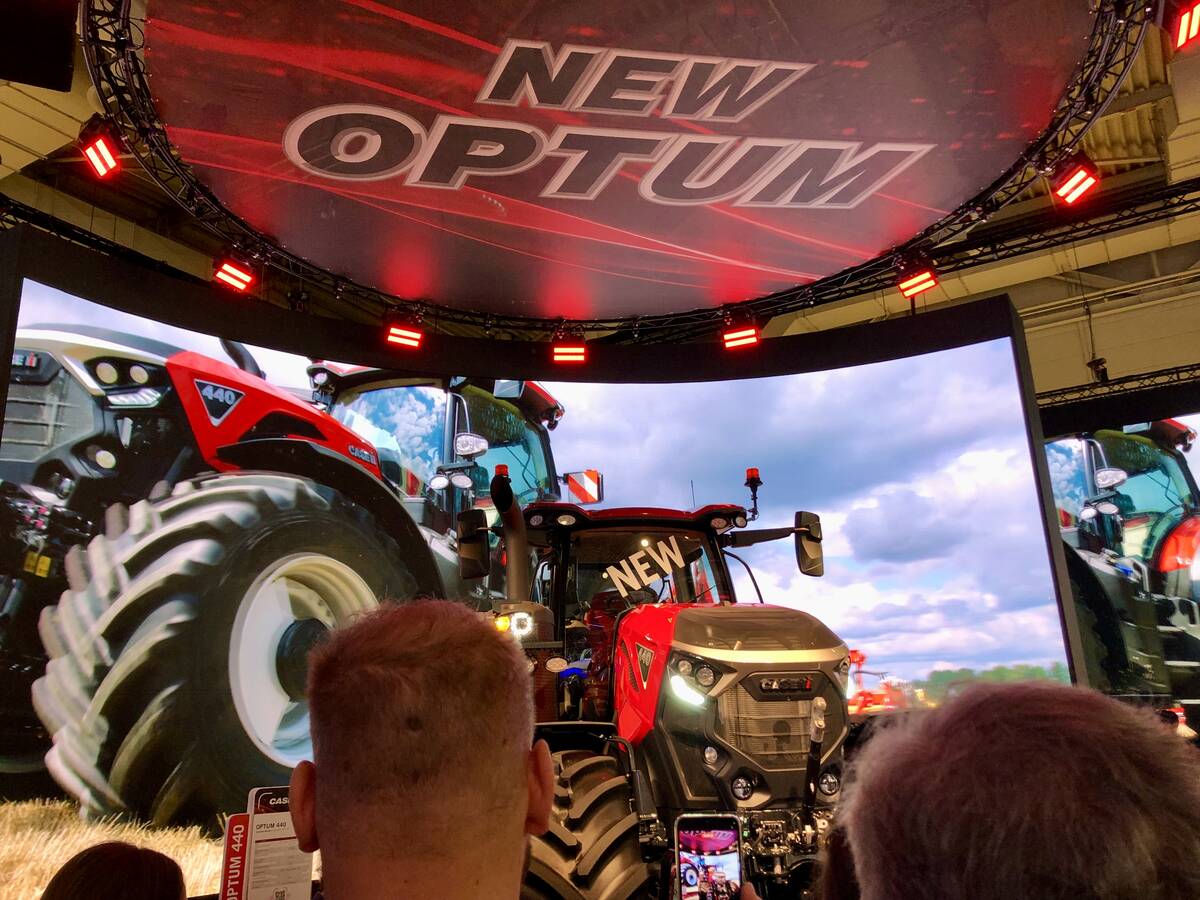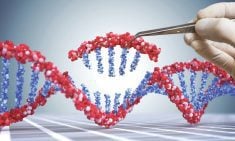A machine not much bigger than a kitchen bread maker issues a whispered
whir, analyzing minute samples of bovine DNA.
In just a few minutes its work is done and the information is
automatically transferred to a laptop computer.
The data on the screen shows what no wily cattle buyer or practiced
show ring judge can discern from sight or touch.
The genetic analysis of a hair or blood sample gives a picture of the
animal as a beef-producing factory.
Read Also

VIDEO: Case IH reveals new Optum tractor at Agritechnica 2025
Case IH reveals its new Optum tractor at Agritechnica 2025.
It identifies whether the animal has a particular genetic mutation that
influences its likelihood of producing a mouth-watering steak or lean
meat better suited to hamburger.
It is information with the potential to turn the beef industry on its
ear, altering feedlot management and breeding programs.
“It is one of the few things I’ve seen in 20 years that is directly
linked to carcass traits,” said Kee Jim, a cattle feeder and
veterinarian who has had his cattle tested.
“If a fairly straightforward test can get you information on carcass
traits, that is not a common thing in the beef cattle production
system. So it looks to be very promising technology.”
Leigh Marquess, head of the company that owns the test, is more
enthusiastic about potential to improve producers’ profits.
“I think this is the most exciting thing for the cattle business, as a
cattle producer, to come along, simply because (the packing plant) is
making settlement, is paying you, every day based on it,” he said.
Marquess leads a group of relatives and friends who graduated together
from the University of Saskatchewan and created a company, Quantum
Genetics Inc., to apply genetic science to a practical, commercial
issue.
The company’s genetic test indicates the likelihood of a beef animal
grading AAA, which indicates its meat has good marbling with fat. A
well-marbled steak is known as a choice cut, juicy and flavourful.
Packers pay premiums for AAA grade animals because that is what
consumers want.
Marquess said it’s easy to see the trend even in the promotions of
high-end restaurants in Saskatoon.
“On the little chalk drawing board outside, it says, ‘we serve AAA
Angus beef.’ For whatever reason, the consumer is demanding that.”
Marquess isn’t an ivy-tower scientist entrepreneur.
After graduating from the U of S, he returned home to Alberta and
started background feeding 500-800 cattle a year.
“Some made me a lot of money and some lost me a fortune. And they were
all under maybe not the best management, but the same management. So I
knew there was a genetic component (accounting for the difference).”
While other cattle feeders might have seen the same thing and
considered breed or another difference, Marquess’s studies at the U of
S pointed his attention to a gene.
More precisely, a variation in what is known as the obese gene
responsible for production of the hormone leptin.
In 1996, working from leads generated from human gene research,
graduate student Carolyn Fitzsimmons participated in a research program
led by animal and poultry science professor Sheila Shmutz. The team
identified the variation, or mutation, in this gene in cattle.
Leptin is produced as the body lays down fat. It acts as a messenger,
travelling in the blood to the brain. If the brain senses through the
quantity of leptin that the body is putting on too much fat, it reduces
appetite and increases metabolism to burn the fat. If it sees too
little leptin, it increases appetite and slows metabolism.
But in some individuals, a natural mutation of the gene causes it to
produce an altered leptin that the brain can’t recognize. The brain is
fooled into thinking the body is losing fat and so it constantly
increases appetite and slows metabolism.
In other words, cattle with the mutation eat more and put on more fat.
The U of S researchers tested the theory on a herd and found that
animals with the mutation definitely put on more fat. The meat is
better marbled and there is a higher likelihood of grading AAA.
Subsequent testing indicated that animals with no copy of the mutation
have only about a 15 percent chance or less of grading AAA. Those with
one copy have about a 35 percent chance and those with two copies have
about a 60 percent chance.
It is perhaps not surprising that this genetic test helps explain the
reputation of British beef breeds for superior meat, since Angus and
Hereford are far more likely to have the gene mutation than European
breeds.














